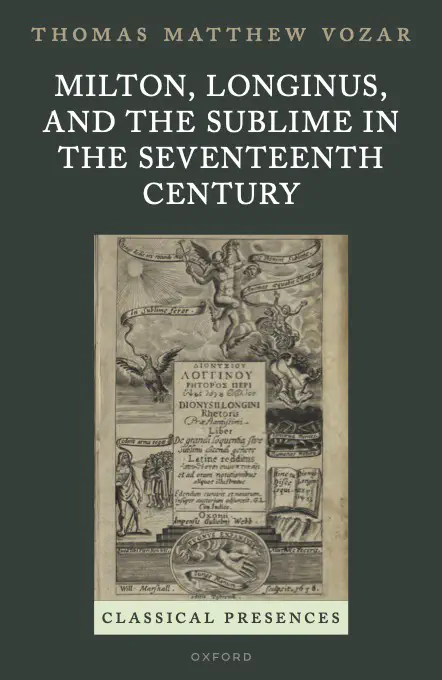Milton, Longinus, and the Sublime in the Seventeenth Century

No author in the English canon seems more deserving of the epithet sublime than John Milton. Yet Milton’s sublimity has long been dismissed as an invention of eighteenth-century criticism. The poet himself, the story goes, could hardly have had any notion of the sublime, a concept that only took shape in the decades after his death with the advent of philosophical aesthetics. Such a narrative, however, fails to account for the fact that Milton is one of the first writers in English to refer to Longinus, the author traditionally associated with the Ancient Greek treatise On the Sublime. This book argues that Milton did have an idea of the sublime–one that came to him from Longinus but also from a larger classical tradition that offered a pre-aesthetic predecessor to the aesthetic concept of the sublime.
Thomas Matthew Vozar shows that Longinus was better known in early modern England than has been previously appreciated; that various notions of sublimity beyond that of Longinus would have been available to Milton and his contemporaries; and that such notions of the sublime were integral to Milton’s rhetorical, scientific, and theological imagination. Additional material relating to the early modern reception of Longinus is provided in the appendices, which contain the first bibliographical study of copies of Longinus in English private libraries to 1674 and an edition of a newly discovered seventeenth-century English translation of Longinus.
Far from being anachronistic, Milton’s “abstracted sublimities” touch on almost every aspect of his thought, from rhetoric to politics, from science to theology. Making substantive contributions to literary scholarship, classical reception studies, and the history of ideas, Milton, Longinus, and the Sublime in the Seventeenth Century returns the sublime to its proper place at the forefront of Milton criticism, re-evaluates the diffusion of Longinian texts and concepts in early modern Europe, and records a crucial missing chapter in the history of the sublime.